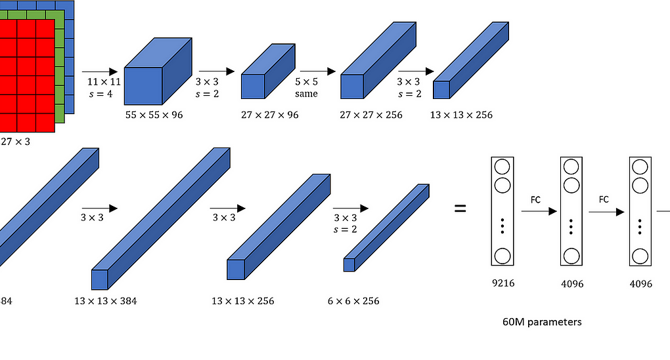Deep Learning News
Medium
304

Image Credit: Medium
AI Agents: Boost Business Growth via Predictive Analytics & Ethical Automation
- AI agents are reshaping the business landscape by leveraging predictive analytics and ethical automation.
- These agents augment human effort and contribute to smarter business strategies.
- AI agents enable businesses to handle customer inquiries round the clock without expensive night shifts.
- They help businesses streamline operations and free up human talent for creating lasting customer experiences.
Read Full Article
17 Likes
Medium
1.5k

Image Credit: Medium
DeepSeek R1: AI Search Without an NVIDIA GPU
- DeepSeek R1 is an AI-powered chatbot that works without an NVIDIA GPU.
- It utilizes techniques like model quantization and knowledge distillation to run efficiently on general CPUs or even AMD GPUs.
- However, the lack of dedicated GPUs sometimes leads to server overload and temporary downtime.
- DeepSeek R1 offers a cost-effective way for developers, researchers, and curious individuals to access powerful AI capabilities.
Read Full Article
23 Likes
Medium
64

The Rise of DeepSeek: China’s Game-Changing AI Shakes Silicon Valley
- DeepSeek is an AI chatbot developed with limited resources but has gained popularity, becoming the most downloaded free app on the Apple App Store.
- The launch of DeepSeek caused a significant decline in tech stocks, wiping off over $1 trillion from the Nasdaq index.
- The Chinese government recognizes the impact of DeepSeek, indicating China's ambition to lead the global AI race.
- DeepSeek challenges the notion that cutting-edge AI development requires massive investments and inspires optimization-focused strategies.
Read Full Article
3 Likes
Medium
100

Image Credit: Medium
The Birth and Evolution of CNNs: From ImageNet to Human-Level Performance
- In 2006, Fei-Fei Li created the ImageNet dataset to support deep learning research.
- The dataset took 2.5 years to complete and posed several challenges.
- In 2010, Fei-Fei Li launched ILSVRC, an annual competition to test computer vision algorithms.
- The breakthrough came in 2012 when Geoffrey Hinton introduced AlexNet, a CNN architecture that significantly outperformed traditional machine learning approaches.
Read Full Article
6 Likes
Medium
9

Image Credit: Medium
Curious About AI? Here’s the Deep Learning Story You Need to Know
- This article takes you back to the roots of deep learning through a simple problem statement, unraveling its origins.
- A quantitative analyst at a hedge fund needs to develop a trading signal based on news sentiment to classify market sentiment as bullish or bearish.
- Weights and bias are introduced to improve the accuracy of the model in classifying market sentiment.
- The article discusses the concept of a perceptron learning algorithm and the evolution of decision boundaries in capturing market patterns.
Read Full Article
Like
Medium
73

Image Credit: Medium
Artificial Neural Networks: Architecture, Learning, and Applications
- Artificial neural networks were introduced in the 1940s but faced limitations initially.
- In the 1980s, breakthroughs in neural network research revived interest.
- ANNs are inspired by the human brain and consist of interconnected artificial neurons.
- Neural networks have various applications and require high-quality data for optimal performance.
Read Full Article
4 Likes
Medium
385

Image Credit: Medium
Mastering AI Agent Planning: A Comprehensive Guide
- AI agents leverage large language models to reason, strategize and execute complex tasks. They are ideal for automating a wide range of processes.
- The development of LLM-based AI agent workflows has been an area of intense innovation, with the ReAct pattern being one of the earliest breakthroughs.
- Task decomposition, multi-plan selection, external planner-aided planning, reflection and refinement, and memory-augmented planning are five key directions in LLM-agent planning.
- Task decomposition is the process of breaking down a complex task into smaller, more manageable sub-tasks.
- Multi-Plan Selection involves generating several possible plans and selecting the most promising one. This strategy is particularly useful when the optimal path is not immediately clear.
- External Planner-Aided Planning involves leveraging external tools and systems to enhance an agent’s planning capabilities.
- Reflection and Refinement allows agents to adapt and improve their future performance. This involves analyzing previous actions and outcomes to refine subsequent behavior.
- Memory-Augmented Planning incorporates memory mechanisms to enhance an agent’s planning capabilities. Memory allows agents to retain and utilize past experiences, which leads to more effective and adaptable behavior.
- Developers need to consider important factors such as hierarchical approach, parallel execution, loop, and conditional logic when implementing planning in AI agents.
- Evaluating an agent’s planning capabilities is crucial to detect failures and ensure system reliability. Proper evaluation will ensure that the agent is able to achieve its goals and does not waste resources.
Read Full Article
23 Likes
Medium
302

Image Credit: Medium
DeepSeek: A Deep Dive into the Mathematical Foundations and Architectural Insights
- DeepSeek is built on the bedrock of deep learning with a focus on optimizing complex functions using gradient-based methods.
- Key mathematical concepts include loss function and optimization, backpropagation, and activation functions.
- DeepSeek's architectural insights include layered structure, parallelism, and scalability.
- Practical implications include transfer learning and potential future enhancements.
Read Full Article
18 Likes
Medium
398

Image Credit: Medium
Face Detection with Python Using OpenCV
- OpenCV is a powerful library for face detection used by organizations like Google, Microsoft, IBM, and Intel.
- Face detection uses visual input to identify a person's face in images or videos, which requires training models with sufficient diversity in the dataset.
- OpenCV has pre-trained models for face detection using a machine learning technique called Haar Cascade to identify objects in visual data.
- Haar Cascade method involves using a cascade of classifiers to detect different features in an image and is combined into one strong classifier.
- OpenCV provides pre-trained models to detect different objects within an image like a person's eyes, upper body, and a vehicle's license plate.
- A bounding box is created around the detected faces to display them in OpenCV.
- To perform face detection on a live video stream, the camera is accessed to read a live stream of video data.
- The same parameters such as scaleFactor, minNeighbors, and minSize can be used to detect faces in a live video stream in OpenCV.
- OpenCV provides an accessible entry point for developers to create efficient and scalable solutions for computer vision applications.
- By mastering the techniques covered in this tutorial, developers will be well-equipped to explore more advanced applications of computer vision in their projects.
Read Full Article
23 Likes
Medium
55

The Ultimate Guide to Optimize VBA Code: Make Your Excel Macros Run 1000x Faster
- Slow VBA code leads to lost productivity, resource drain, increased errors, and frustrated users.
- Optimized code can run dramatically faster, improving business operations and user satisfaction.
- Essential Optimization Techniques: Disabling Excel Features, Using Arrays, Efficient Object Handling, Memory Management, Error Handling.
- Advanced Optimization Strategies: Early vs. Late Binding, Advanced Filtering, Array Optimization.
Read Full Article
3 Likes
Medium
252

Image Credit: Medium
Uncertainty in deep learning models
- Uncertainty in deep learning models can arise from randomness or inherent noise in the dataset.
- The uncertainty cannot be reduced with more data collection.
- There are two types of uncertainty in deep learning models - Aleatoric uncertainty and Epistemic uncertainty.
- Aleatoric uncertainty is due to randomness or noise in the dataset, while Epistemic uncertainty represents the model's lack of knowledge.
Read Full Article
15 Likes
Medium
66

Image Credit: Medium
Why A Data Science Course In Kochi Is The Perfect Career Move
- Data science involves transforming raw data into useful information using tools, math, and computer programs.
- Kochi, a city in Kerala, is becoming a hub for data science education and industry growth.
- Choosing a data science course in Kochi offers proximity to IT companies and startups, affordable training, expert instructors, and a peaceful and vibrant city environment.
- Data science skills are in high demand globally, offering numerous job opportunities and attractive salaries.
Read Full Article
3 Likes
Nvidia
105

Image Credit: Nvidia
What Is Retrieval-Augmented Generation, aka RAG?
- Retrieval-augmented generation (RAG) is a technique for enhancing the accuracy and reliability of generative AI models with information found through specific and relevant data sources.
- RAG is used to link generative AI services to external sources like technical details or other relevant data sources.
- RAG helps models to become more trustworthy and accurate, making them more efficient in delivering authoritative answers.
- With RAG, one can have conversations with data repositories, which opens up new applications for the advent of AI.
- RAGs relatively easy set up empowers developers with the ability to implement it with as few as five lines of code, till date.
- Companies such as AWS, IBM, Google, Oracle, Microsoft, and Pinecone are adopting RAG for LLMs.
- NVIDIA AI Blueprints enables developers to build pipelines that connect AI applications to enterprise data using industry-leading technology.
- The NVIDIA LaunchPad lab provides developers and IT teams with hands-on training on how to build AI chatbots with RAG.
- RAG can potentially enhance customer service operations, employee training, and developer productivity.
- The future of generative AI lies in agents with knowledge bases that can dynamically orchestrate to create autonomous assistants with authoritative and verifiable results for users.
Read Full Article
6 Likes
Medium
371

Image Credit: Medium
Boost Your Income with Unique Voice Cloning Skills
- Voice users are discovering income opportunities through voice cloning.
- An innovative product utilizes Vocal Identity Matrix technology to create indistinguishable voice clones.
- Voiceovers in multiple languages can be created while preserving the natural accent and intonation.
- Using this tool can lead to increased engagement, higher income, and improved productivity.
Read Full Article
22 Likes
Medium
314

Image Credit: Medium
DeepSeek AI: The Game Changer in Artificial Intelligence Innovation
- DeepSeek AI is a leading AI company that develops innovative AI solutions based on deep learning and other advanced techniques.
- The company has made significant strides in NLP, computer vision, and reinforcement learning, enabling machines to better understand and interact with humans.
- DeepSeek AI uses ethical and transparent AI systems and adheres to data privacy and security standards.
- DeepSeek AI has developed AI-powered diagnostic tools that help doctors detect diseases such as cancer, diabetes, and heart conditions at an early stage.
- The company is also revolutionizing the way businesses manage risk, detect fraud, and make investment decisions.
- In the retail industry, DeepSeek AI's inventory management systems are reducing waste and enhancing operational efficiency.
- DeepSeek AI's AI-driven tutoring systems are providing personalized learning for students in remote and underserved areas.
- The company's commitment to innovation, ethics, and real-world applications is reshaping the future of AI.
- DeepSeek AI seeks to make AI more accessible to businesses and individuals and plans to explore new frontiers in AI research.
- With its visionary leadership and commitment to positive change, DeepSeek AI is well positioned to create a smarter, more connected world.
Read Full Article
18 Likes
For uninterrupted reading, download the app